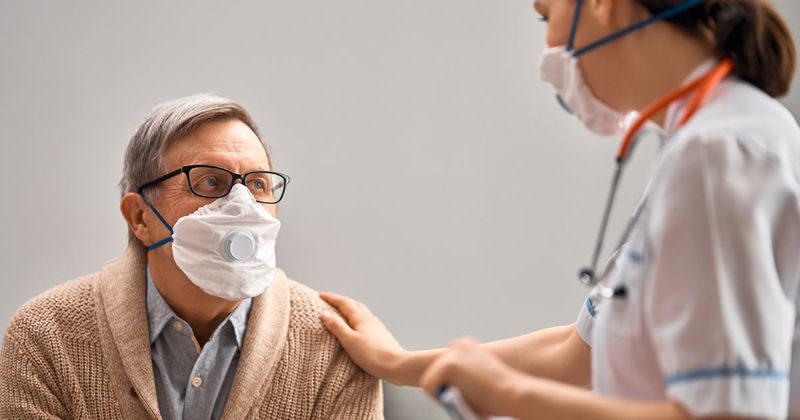Calabrese offers path for the art and science of empathy in rheumatology
The practice of empathy in rheumatology is a science that should be “explored, exploited and adopted” for the best care of patients, according to Leonard H. Calabrese, DO.
In his ACR Convergence 2020 session, titled “Empathy and the Rheumatologist: Why Should We Care?”, Calabrese aimed to elevate the audience’s thinking about empathy by discussing the basics, outlining the science, and suggesting a path forward within the field of rheumatology.

“Of all of the definitions of empathy, I advocate the definition proposed by Mohammadreza Hojat, PhD, at Thomas Jefferson University, who I’ve had the privilege to collaborate with over the last decade,” Calabrese, RJ Fasenmyer Chair of Clinical Immunology at the Cleveland Clinic, and chief medical editor of Healio Rheumatology, told attendees. “And in the medical care sense, he says that it is predominately a cognitive attribute, not an emotional attribute. It involves some type of understanding of what the patient is saying ... we need to have some perspective on their experience and their concerns, but it does not end there, it’s not in our minds.”
He added: “It then must be combined with some capacity to communicate this back to the patient. If I only have it in my head, the patient doesn’t appreciate it and it doesn’t do any good. And this comes with an implicit understanding of ‘I intend to help you;’ it’s a compassionate statement.”
Identifying the problem
The problem in rheumatology, according to Calabrese, is the treat-to-target approach that equates scores on a scale — tender and swollen joints, acute phase reactants, Physician Global Assessment and adjunctive measures — with success. However, the patients are not concerned with their swollen joint count or RAPID 3 score, but rather that they feel pain.

“[They care] that they’re not doing things or seeing people, that they’re not enjoying themselves,” he said. “They may have intercurrent mood disorders, maybe they’re worried about fertility or having concerns about having sex or not having sex. Fatigability is the elephant in the room, it’s the symptom that rheumatologists like to discuss the least because we feel so powerless, but there’s a dichotomy.”
Discordance among patients and their providers is real, or “palpable” as Calabrese put it. Results of a qualitative analysis published in Arthritis Care & Research in 2018 from the Mayo Clinic demonstrated that within a population of discordant patients, recurrent themes emerged: patients did not feel empowered after their visit, there were unmet psychosocial needs and a repeated notion that the provider was not hearing what the patient had to say.
According to Calabrese, the traditional approach to immunologic disease therapy relies on an accurate diagnosis, targeted therapies, reduced disease activity and damage prevention. However, he hopes providers will consider a new approach that builds on the traditional one but emphasizes wellness, lifestyle, empathy and empathic communication.
Benefits of empathy
Calabrese explained how practicing empathy has been shown to result in greater career satisfaction, lower burden, better perceived care according to patients and lower rates of litigation. Among trainees, benefits include clinical confidence, Calabrese said, but this does not translate to board scores. Additionally, in some studies physician self-reported empathy has been linked with patient outcomes.
Though most providers enter their program — whether medical school, nursing school or a PA program — with a high degree of empathy, additional data from Hojat et al, have shown that empathy may erode in the third year due to the “hidden curriculum.” This includes high volume work, time pressures, patient and environmental factors and the EMR.
Next, Calabrese prompted the audience to consider the placebo effect, something not often studied in rheumatology.
“The new view of the placebo effect extends far beyond inert substances,” he said. “Scientists that have studied and published on this now pose that ‘placebo effect’ should be used generically for beneficial effects, and also from the context of the clinical encounter, including the ritual of treatment in the doctor-patient relationship. It’s distinct from therapeutic benefits from our drugs and medical interventions.”
According to Calabrese, open-label placebo studies have been effective, and the therapeutic environment has been examined to show that fostering friendliness, empathy and confidence can gain better effects, like reducing symptoms of the common cold or improving IBS.
“I don’t think [the placebo] lowers anyone’s viral load, or will cure their cancer or stop erosions, but there are ample data to show it’s a positive force for influencing sickness and wellbeing of patients; and remember, it’s what keeps patients from going into low remission categories of disease. It does not rely on trickery,” he said.
“This is now referred to as the interpersonal healing effect; I teach this in fellowship program, and it’s especially effective at relieving pain, anxiety, fatigue and improving quality of life. Who wants to argue that these are not important in our practice?”
A path forward
In 2010, the Cleveland Clinic implemented a relationship-centered care model that led to improved provider communication, and peer-reviewed studies showed participants in the program experienced meaningful and significant improvements in empathy.
With this success story in mind, Calabrese challenged the audience to consider an empathy agenda for rheumatology:
- Can empathy impact outcomes (PROs, pain, quality of life, fatigue and beyond)?
- How do rheumatology providers compare to other cognitive/non-cognitive providers who have been shown to have high empathy?
- How can we teach and model empathy in fellowship training?
- How can empathy affect interpersonal healing and the placebo effect in practice and research?
“Anyone who is interested in engaging in empathy research, you know where to find me after this meeting,” he said.







